What is Bhang and How To Make It

- 1. What is bhang and where does it come from?
- 1. a. Bhang and the hindu culture
- 2. What are bhang's uses?
- 3. How to make bhang
- 3. a. Ingredients and tools
- 3. b. Instructions to make bhang thandai
- 3. c. Step 1
- 3. d. Step 2
- 3. e. Step 3
- 3. f. Step 4
- 3. g. Step 5
- 4. In conclusion
When it comes to marijuana and its ways of consumption, there are uncountable forms in which a person can choose to administerer this plant, whether it is by smoking in a joint or a bong, eating it, or using it in concentrate forms such as lotions or transdermal patches.
And newer ways of consuming cannabis will always keep popping up, we've all heard about vaporizers and other new crazy stoner paraphernalia. Nevertheless, this isn't to point out that older methods are any less relevant than the newer ones.
In fact, the most traditional ways of consuming marijuana are usually the ones that still prevail the most along with the history of humanity. Joints, pipes, and bongs, as well as different forms of edibles, were all already common ways of consuming marijuana back then, thousands and thousands of years ago.
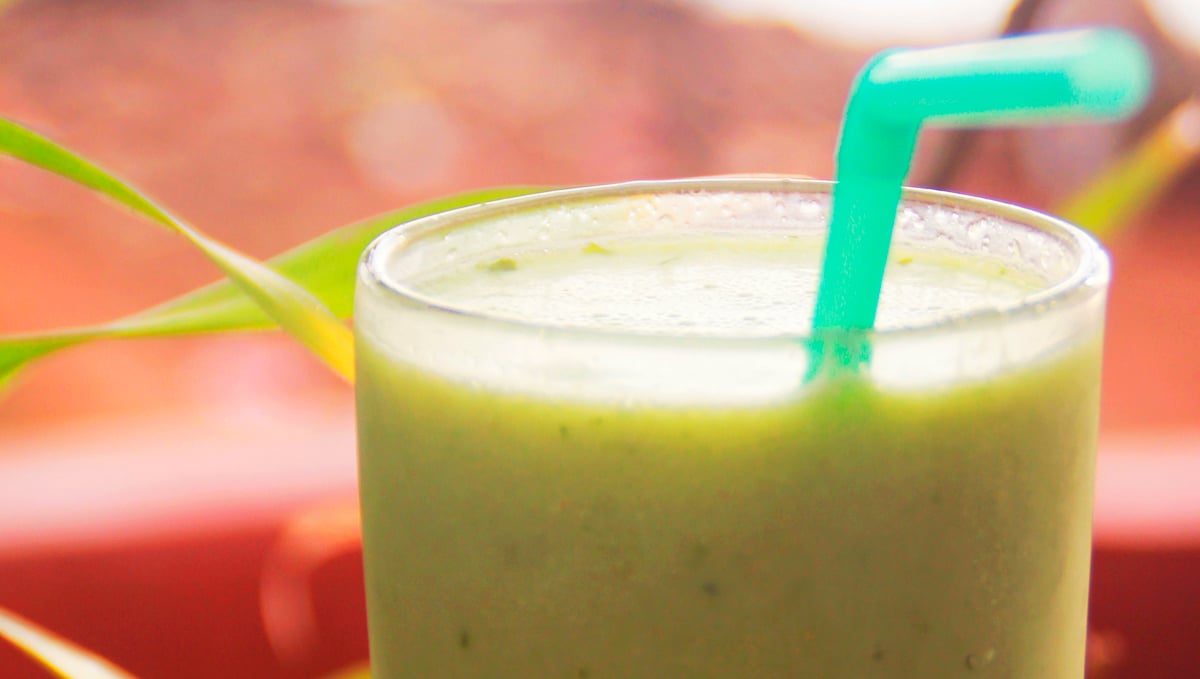
Bhang, for instance, is another ancient form of marijuana consumption that's prevailed until today, although on a much lower scale. Let's find out what bhang is and how to make it.
1. What Is Bhang and Where Does It Come From?
Bhang is a form of cannabis consumption originating from the Indian Subcontinent (Bangladesh, Bhutan, India, Maldives, Nepal, Pakistan, Sri Lanka), which has been used for thousands of years, dating as far back as the year 1000 B.C. in Ancient India.
While this may vary slightly, bhang is normally a drink made from milk or yogurt, a mix of spices, and a paste made from cannabis, which consists of leaves and flowers taken from female marijuana plants, a.k.a. the ones that produce the buds.
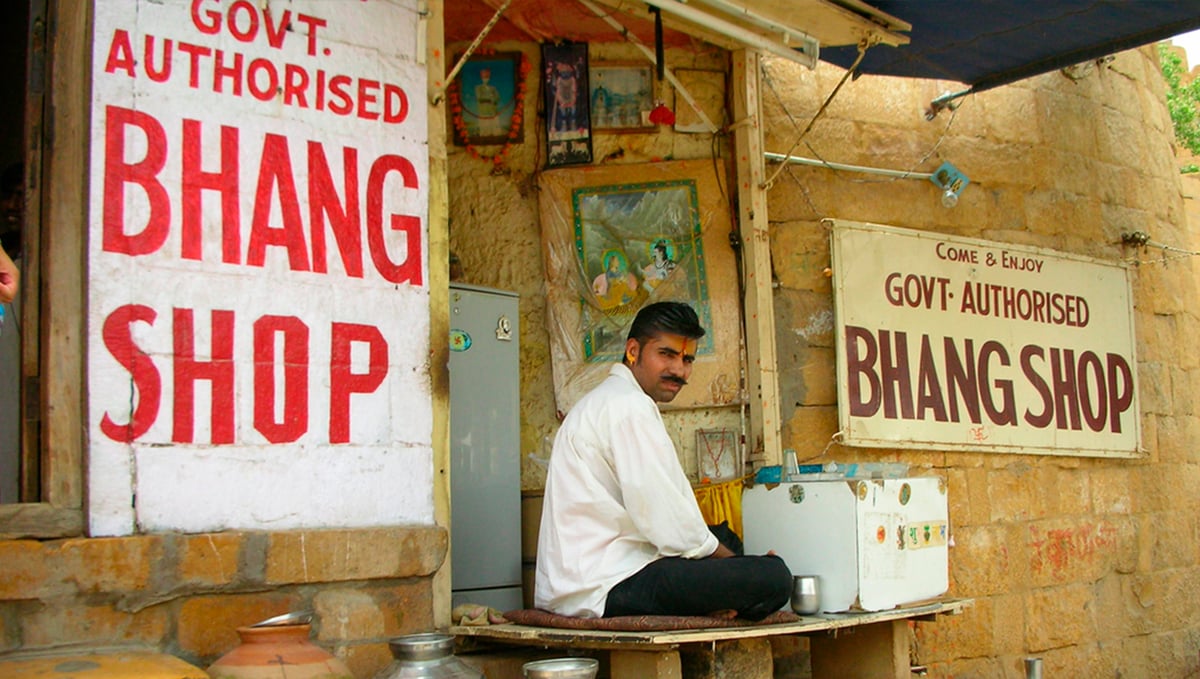
Traditionally, bhang is distributed in springtime for the festivals of Maha Shivaratri, Janmashtami, and Holi. Normally, bhang is sold by street vendors or in bhang shops, where they sell the Indian marijuana-infused drinks known as bhang lassi, bhang thandai, and bhang goli.
And while producing marijuana and selling it is prohibited in India, Bhang is still allowed in certain areas, in cultural and religious terms. However, the Indian National Policy on Narcotics and Psychotropic Substances only allows for the leaves of the cannabis plant to be added into the recipe and no other parts of the plant. 1
Bhang and the Hindu Culture
Bhang is a big part of the Indian culture, especially Hinduism, due to its relation with the god of destruction and transformation Shiva. And while this might sound too harsh, in Hinduism destruction isn't looked upon as a negative trait, since destruction leads to new creation, new life.
The legend concerning Shiva and bhang in the Hindu religion has it that he had once descended from the mountain range known as the Hindu Kush, cool name huh, and brought with him bhang as an offering for humanity, claiming that he, Shiva himself used the mix on a daily basis to boost his powers.
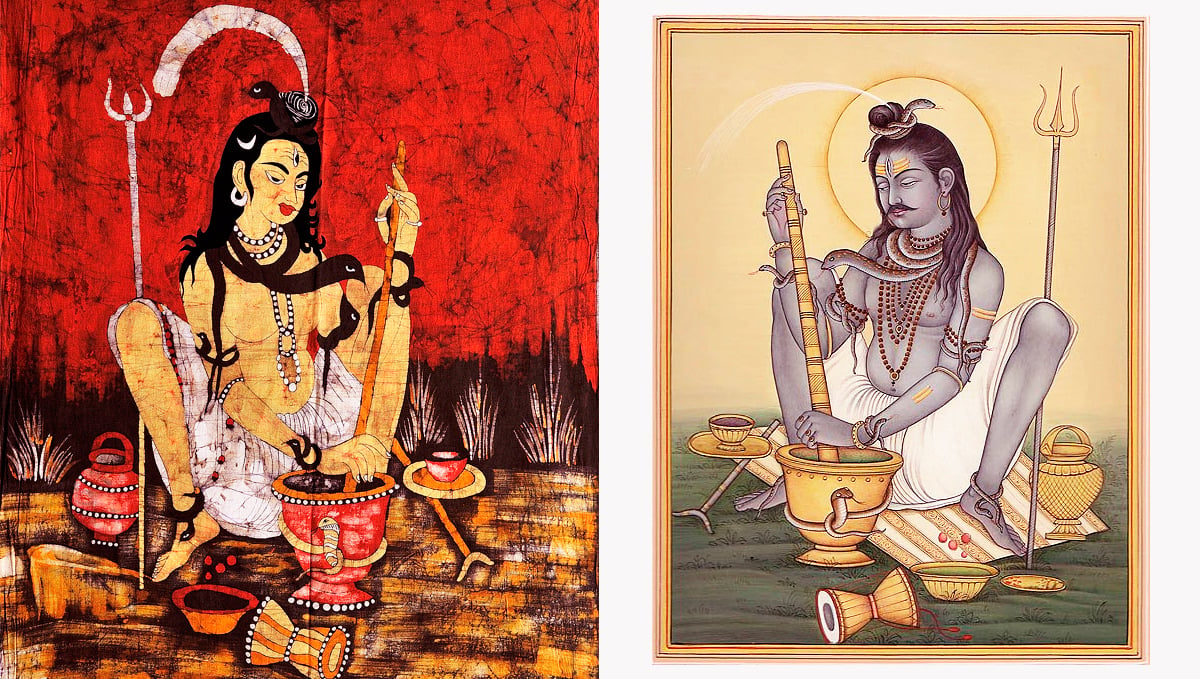
Shiva would use it to harness his divine powers and help him focus inward, which led cannabis to be considered as one of the five most sacred plants on the planet in the sacred Hindu scripture Atharvaveda. The Vedas, for their part, refer to marijuana as a "joy giver" or a "source of happiness". In their rituals, they would burn cannabis stems in their Vedic fire ritual, which they called yagna, to help them overcome evil forces and enemies.
The use of bhang is now completely normal in India, given it's been socially acceptable for thousands of years already. In fact, when in the 19th century the British arrived to the country to colonize it, and they bumped into such a widespread use of it, they decided that too much civil chaos would have taken place if they outlawed the use of bhang.
2. What Are Bhang's Uses?
Marijuana in several of its forms of consumption is known for its many different purposes in the medical, therapeutic, and spiritual fields. In the Indian culture, bhang is already well integrated as a resource for not only medical but spiritual purposes.
In rural parts of India, for example, they consider that bhang has the capacity to cure fevers, sunstroke, and dysentery. It is also used to aid in digestion, to get rid of phlegm, and even for curing impediments in speech. Ancient Indian forms of medicine such as Tibbi and Ayurvedic also used cannabis in oral forms as a treatment for illnesses such as malaria and rheumatism.
Furthermore, warriors would use bhang to help them make up their minds and calm their nerves, while newly married couples made the most out of it using it as a natural aphrodisiac, to boost their libido. 2
| Medical Uses for Bhang | Details |
|---|---|
|
Anti-nausea and vomits |
Studies found that the THC in bhang can effectively reduce nausea and vomiting in patients undergoing chemotherapy for cancer. |
| Pain and inflammation relief | Since marijuana is a great analgesic and anti-inflammatory, bhang can be used as an oral form of medical marijuana for pain relief. |
| Anti-seizures and muscle spasms | Since edibles provide more of a body high, bhang is great to treat those dealing with conditions such as multiple sclerosis or epilepsy. |
| Anti-cancer | Marijuana is well known for preventing certain cancer cells from spreading. |
| Sleeping aid | THC is a strong psychoactive compound that is normally used to treat patients struggling with sleep disorders. |
| Boost the appetite | Again, THC is frequently employed to increase the appetite of patients experiencing appetite loss due to their medical treatments. |
Now that we know some of the many benefits we can get from bhang, it's time we learn how to make it!
3. How To Make Bhang
There are three common types of bhang, bhang goli, which is freshly ground marijuana mixed with water; bhang lassi, which blends the weed with curd and whey, the solid and liquid parts of milk that get separated when you coagulate milk; and bhang thandai, which combines a mix of spices.
Advice!If you're a cultivator yourself, definitely do use your fan leaves and trims. Freshly cut marijuana works much better than already dried flowers and leaves.
If you'd like to try making your own bhang drink at home then here's a normal bhang recipe you can make.
Ingredients and Tools
- 2 cups of water;
- 14 grams of fresh cannabis leaves and flowers;
- 3 cups of warm milk;
- 1/2 cup honey or sugar;
- 1/4 tsp ground ginger;
- 1/4 tsp garam masala;
- 1/2 tsp ground anise;
- 1/2 tsp ground cardamom;
- 1/4 tsp ground fennel;
- 1/2 tsp rosewater;
- Mint leaves, rose petals, crushed almonds, or pistachios to garnish;
- 1 large saucepan with lid;
- 1 container;
- Mortar and pestle;
- And a fine mesh strainer or cheesecloth.
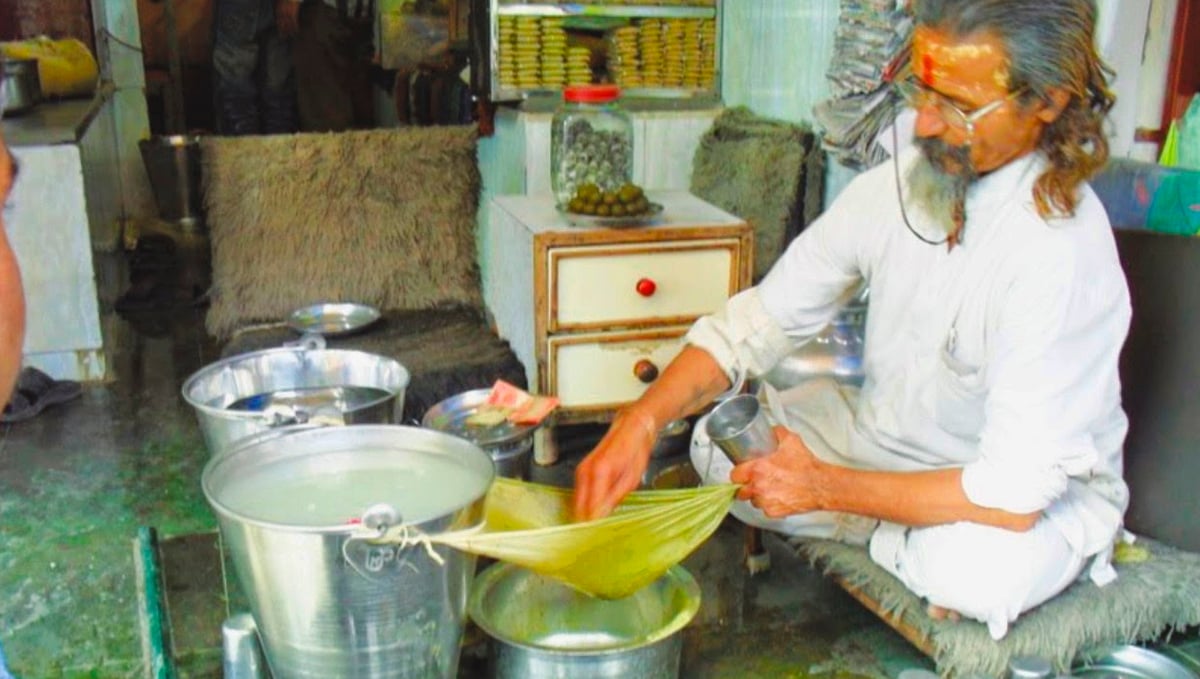
Once you've gathered your tools and ingredients you should be good to start cooking your own bhang.
Instructions to Make Bhang Thandai
Making bhang is simple and easy to our luck, it consists of only 5 steps. Head to the kitchen, chuck on your cooking apron and get ready for a spicy treat.
Step 1
Take the cups of water, throw it into the pan, and heat it at a high temperature until it reaches its boiling point. Turn off the heat and throw in the weed plant material, letting it steep for 7 minutes.
Step 2
Taking the cheesecloth or fine mesh strainer, strain your leaves and flowers from the water, keeping the water in a container to the side. Squeeze well the plant matter until all the liquid is removed.
Step 3
Take the plant matter and place it into a mortar and pestle along with 2 teaspoons of warm milk. Grind the mix slowly but firmly and once you're done, squeeze the leaves and flowers again to make the most out of them and to get rid of the milk, which you should save along with the water in the container for later use.
Repeat until you've used 1/2 cup of milk.
Step 4
Take the garnish of choice, mint, almonds, pistachios, or anything else, and add them to the mortar and pestle with some more warm milk. Keep grinding until a fine paste is formed. Gather the extract again, mixing it with the other liquids, and discard any remaining nut fibers or residues.
Step 5
Mix all the remaining ingredients together, adding ginger, anise, garam masala, fennel, cardamom, and rosewater. Take the honey and the remaining warm milk and add it as well.
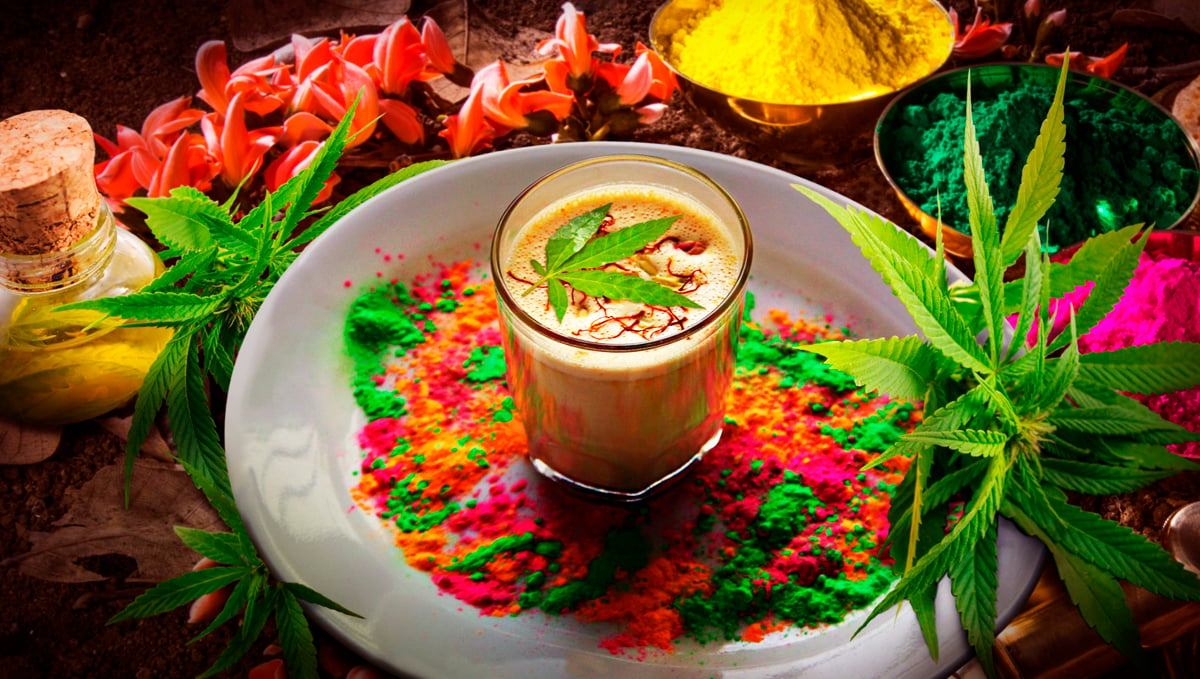
Make sure everything is well blended, pour it into a glass, and enjoy!
4. In Conclusion
When it comes to improving your experiences as a stoner, all it takes is some curiosity and investigating!
As you search through the unknown, whether it is by googling, reading, or asking for advice, you'll be able to learn so much more about the things you love, such as marijuana in this case.
Don't stay in the comfort zone, the comfort zone is for lazy people! Get out there, try new things and discover the great world that surrounds you in the cannabis field. There's yet so much more to discover than the normal joint, bong, or crazy brownies, what's stopping you?
EXTERNAL REFERENCES
- "Bhang - beyond the purview of the narcotic drugs and psychotropic substances act" Yatan Pal Singh Balhara and Shachi Mathur. October 2014.
- "Sex Differences in Cannabis Use and Effects: A Cross-Sectional Survey of Cannabis Users" Carrie Cuttler, Laurie K. Mischley, and Michelle Sexton. July 2016.
- "The Health Effects of Cannabis and Cannabinoids: The Current State of Evidence and Recommendations for Research." National Academies of Sciences, Engineering, and Medicine; Health and Medicine Division; Board on Population Health and Public Health Practice; Committee on the Health Effects of Marijuana: An Evidence Review and Research Agenda.








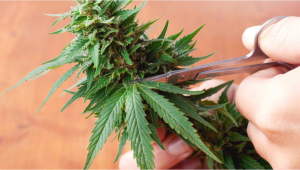


Comments